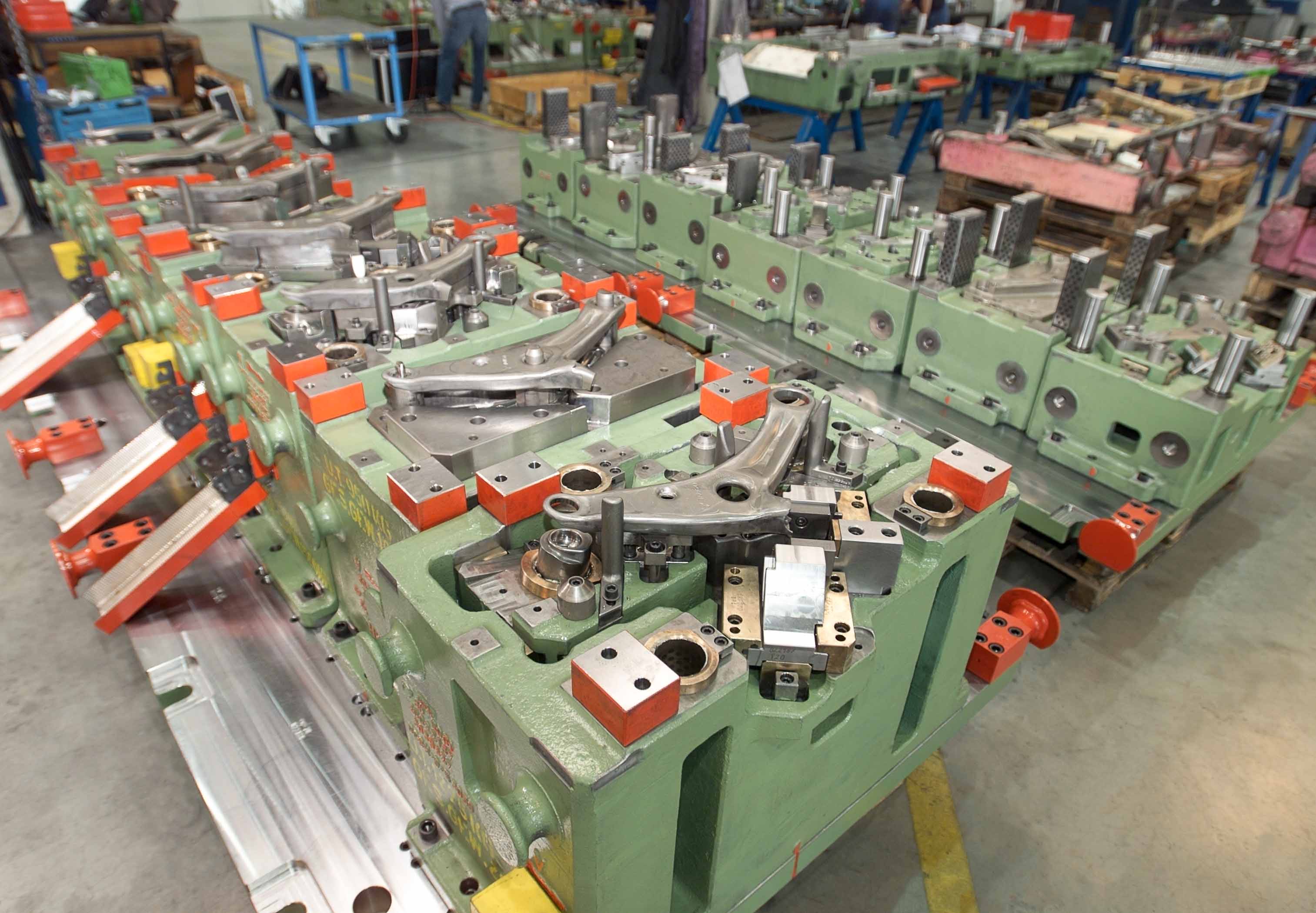Transfer Tool Made Simple: Definition and Functionality
A transfer tool is a forming tool consisting of multiple stations, where a sheet metal blank undergoes a series of forming operations – such as deep drawing, cutting, embossing, punching, or bending. Between each station, the part is automatically moved by a transfer system, typically using grippers or pushers.
This setup is also known as a multi-stage forming tool with integrated transfer automation.
How It Works in Practice
- Loading: A blank (usually fed by a robot or coil feeder) is placed into the first station.
- Forming: The first forming operation (e.g. deep drawing) is carried out.
- Transfer: A mechanical transfer system grips the semi-finished part and moves it synchronously with the press to the next station.
- Further Forming: Additional steps like punching, trimming, flanging, or re-shaping follow.
- Unloading: At the end of the line, a finished or near-finished component exits – ready for the next production step.
What Makes a Transfer Tool So Special?
- Flexibility: Perfectly suited for complex parts that require multiple forming steps.
- High Part Quality: Precise positioning at every station ensures consistent dimensional accuracy.
- Automation: The integrated transfer system enables fully automated operation – ideal for high-volume production.
- Process Integration: Multiple forming operations are combined in a single press stroke.
When Is a Transfer Tool Used?
A transfer tool is the solution of choice when:
-
the part is too complex for a progressive die,
-
different forming processes are required within one tool,
-
large deep-drawn or structurally relevant components are needed – such as reinforcements, carriers, or A/B-pillars in automotive applications.
And what is the difference compared to a progressive die?
Transfer Tool | Progressive Tool |
Individual parts are moved | Material strip runs continuously |
Blank is loaded into station 1 | Coil is unrolled |
Transfer automation required | Strip feed is sufficient |
Enables very complex parts | Ideal for simpler series parts |
High effort, but more process flexibility | More compact, but limited in versatility |
Transfer Tool: The All-Rounder for Big Tasks
A transfer tool is more than just a tool – it’s a compact manufacturing marvel. It combines multiple forming steps into one efficient process, bringing complex components into shape quickly and precisely. Sure, the effort required for design, construction, and fine-tuning is higher – but in serial production, it pays off many times over.
Are you planning a project with complex forming parts or looking to optimize your production?
Let’s talk! weba develops custom transfer tools – precise, economical, and tailored to your requirements.
Contact us: office@weba.solutions

